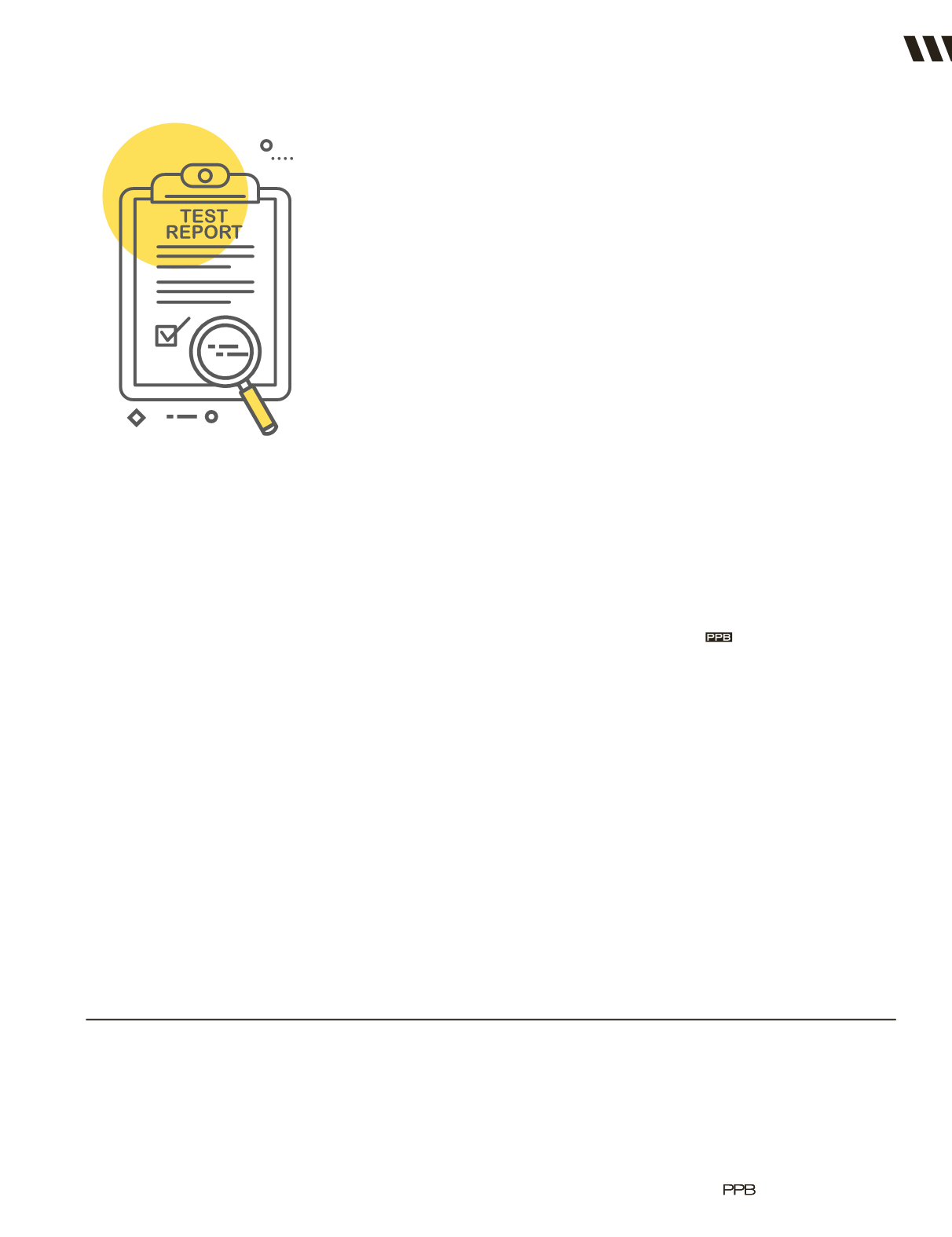

highest-risk situations. Children’s
products, children’s jewelry and children’s
toys all have significant compliance
and safety implications, so you should
naturally devote greater scrutiny to these
products. Food products, food containers,
hand sanitizers, lip balms, sunscreens,
skin lotions and sunglasses are all
regulated products with significant safety
and compliance implications. And, of
course, the single most dangerous product
in our industry—lithium ion batteries—
which power portable phone chargers,
Bluetooth speakers and a wide range of
other electronic products, deserve your
greatest scrutiny. Learn the key safety
and quality differentiators for each of
these high risk products and then choose
carefully. Very carefully.
14
Include safety and compliance
requirements on your purchase
orders.
Compliance and product
safety in the promotional industry require
clear communication and a strong
partnership between the distributor and
supplier. All the information you learn in
your client meeting—the intended audience
for the promotion, the ages of any children
involved, the states or countries where the
product will be distributed—should all
be written on your purchase order. Don’t
assume anything. It doesn’t matter if you
mentioned your requirements to a customer
service agent or wrote them in the email
with your purchase order (P.O.) attached.
Suppliers get many hundreds of calls and
thousands of emails every day.The only
document that is certain to travel with your
order from start to finish is your P.O., and
it is also the contract between you and the
supplier. If the product must comply with
CPSIA, Prop 65 or the Illinois Cadmium-Safe
Kids Act, include that as a special instruction
on your purchase order. It’s also a smart idea
to ask the supplier to specifically confirm
that they can comply with these instructions.
15
If you hear of any safety or
compliance incidents, report them
to your company immediately.
If
your client emails you about an incident—
perhaps that a glass tumbler broke and
someone’s hand was cut—report it to your
company and investigate immediately. Do
the same for a compliance violation if you
find out after the fact that a product your
company shipped was not compliant. CPSIA
contains strict reporting requirements
that start themoment you learn of an
incident.The single biggest reason for the
civil penalties stated earlier was failure of
these companies to notify CPSC in a timely
manner. Always let your compliance team
know of any incidents reported to you.
16
Find a compliance/product safety
advisor or mentor to help you learn
to make the right decisions.
Even
the most knowledgeable and experienced
compliance practitioners have colleagues
and consultants they rely on for expert
advice and second opinions. No one is an
expert at everything, especially in a field
as broad and complicated as compliance.
There are notable experts in our industry—
at PPAI and its Product Responsibility
Action Group—but the most reliable
sources of compliance expertise are major
testing labs, professional consultants and
experienced product safety attorneys.
So there you have it—16 ways you can
protect your clients and your business.
Post these on your refrigerator. Pass them
around your office. Make thempart of your
DNA.They will make youmore valuable
to your clients and to your employer, and
they will help distinguish you in an industry
of commodities.They are the essence of
PPAI’s Product Safety Aware initiative and
they will make you a worthy product safety
ambassador. But most of all, they’re the right
thing to do.
Rick Brenner, MAS+, is president of
RFBrenner LLC, a management consulting
firm. He coaches CEOs and advises
industry firms on growth, strategy,
finance, acquisitions, operations, product
development, supply chain, improving
profitability and developing wealth. Brenner
also heads Product Safety Advisors LLC,
which helps firms and implement product
safety, compliance and social responsibility
programs. He is the immediate past
chair of PPAI, president elect of ICPHSO,
the International Consumer Product
Health and Safety Organization, and an
18-year industry veteran, 12 of which were
spent as CEO at supplier Prime Line.
Where Will You Be September 18-20?
Reserve your seat at PPAI’s Product Responsibility Summit in National Harbor, Maryland, September 18-20, and
educate yourself on all things relating to product safety, responsibility and compliance. Speakers include two CPSC
commissioners as well as experts inside and outside the industry who will teach the latest developments and best
practices. Get details and register at
www.ppai.org/education/productresponsibilitysummit.|
SEPTEMBER 2016
|
83
The Case For Revisiting Product Safety
|
FEATURE
















